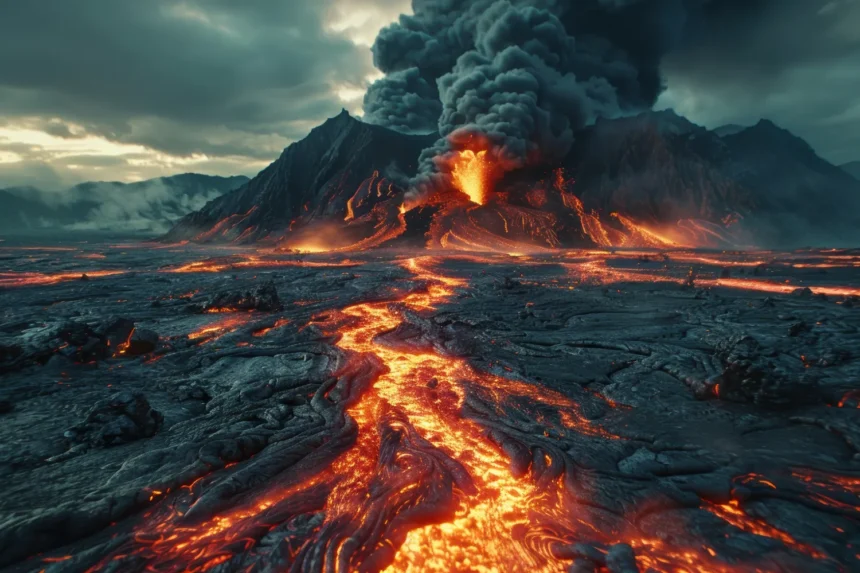Introduction
Volcanoes represent some of nature’s most spectacular yet deadly phenomena. Around the globe, more than 1,500 active volcanoes threaten millions of lives with the potential for catastrophic volcanic eruptions. Just in the United States, nearly 170 volcanoes remain active, posing serious geological risks to nearby communities and ecosystems. While volcanic activity can significantly shape our landscapes, it also has the power to disrupt lives, alter global climate, and even change the course of human history.
In this detailed exploration, we’ll discuss the largest and most dangerous volcanoes by continent, examining their explosive histories, current monitoring practices, and the geological risks they present. Our understanding of volcanic eruptions grows as volcano monitoring technology advances, but vigilance remains crucial in mitigating disasters.
Read also: Explosive Threat: Top 10 Most Dangerous Volcanoes on Earth
Overview of Largest and Most Dangerous Volcanoes by Continent
| Continent | Largest Volcano | Most Dangerous Volcano |
| Asia | Mount Fuji, Japan | Mount Merapi, Indonesia |
| Africa | Mount Kilimanjaro, Tanzania | Mount Nyiragongo, DRC |
| Europe | Mount Etna, Italy | Mount Vesuvius, Italy |
| North America | Mauna Loa, USA | Mount St. Helens, USA |
| South America | Ojos del Salado, Chile | Nevado del Ruiz, Colombia |
| Australia/Oceania | Tavurvur, Papua New Guinea | Mount Ruapehu, New Zealand |
| Antarctica | Mount Erebus | Mount Erebus |
7 Largest and Most Dangerous Volcanoes by Continent
Asia’s Volcanic Titans
Largest Volcano in Asia – Mount Fuji, Japan

- Elevation: Approximately 3,776 meters (12,388 feet), making it the highest mountain in Japan.
- Location: Near the Pacific coast of central Honshu, about 60 miles (100 km) west of the Tokyo-Yokohama metropolitan area.
- Type: Stratovolcano.
- Features:
Renowned for its symmetrical cone and cultural significance in Japan. - Activity:
Last erupted in 1707 but is still classified as active by geologists. - Hazards:
Potential eruptions could impact densely populated regions, including Tokyo. - Monitoring:
Continuous monitoring by the Japan Meteorological Agency.
Read also: Top 10 Most Popular Cities In The World To Visit In 2025
Most Dangerous Volcano in Asia – Mount Merapi, Indonesia
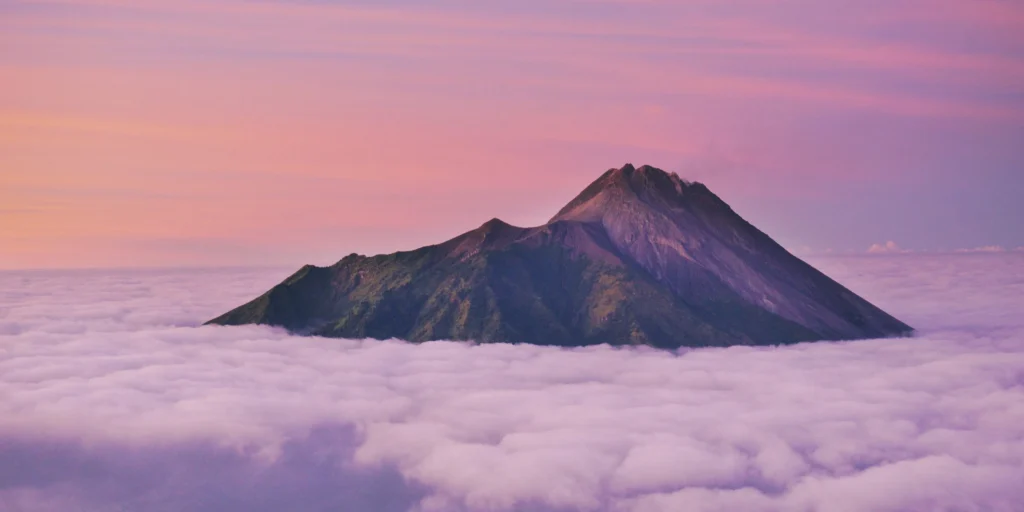
- Elevation: Approximately 2,968 meters (9,737 feet).
- Location: Central Java, near the city of Yogyakarta, Indonesia.
- Type: Stratovolcano.
- Features:
One of Indonesia’s most active and hazardous volcanoes. - Notable Eruptions:
Frequent eruptions, with significant activity in 2010 causing numerous fatalities and evacuations. - Hazards:
Pyroclastic flows, ashfall, and lahars affecting surrounding communities. - Monitoring:
Vigilant monitoring by the Indonesian Center for Volcanology and Geological Hazard Mitigation.
Africa’s Volcanic Landmarks
Largest Volcano in Africa – Mount Kilimanjaro, Tanzania
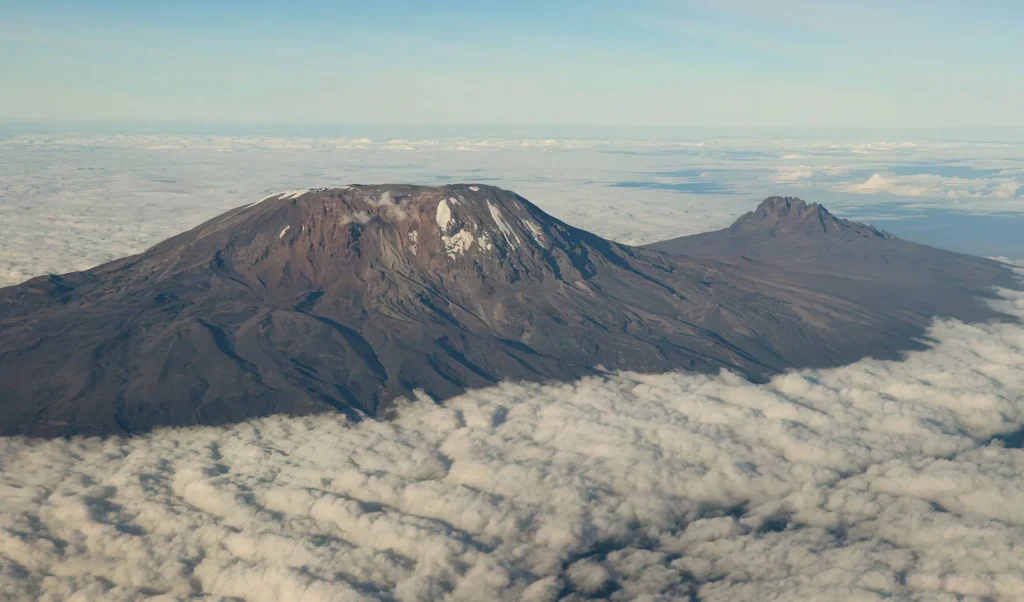
- Elevation: Approximately 5,895 meters (19,341 feet), making it the highest peak in Africa.
- Location: Northern Tanzania, near the border with Kenya.
- Type: Stratovolcano with three cones: Kibo, Mawenzi, and Shira.
- Features:
Known for its snow-capped summit and as a major climbing destination. - Activity:
Currently dormant, with the last major activity occurring over 360,000 years ago. - Hazards:
While dormant, potential hazards include glacial melting and rockfalls.
Read also: Hidden Facts About Black History: Unveiling 7 Untold Stories and Forgotten Legacies
Most Dangerous Volcano in Africa – Mount Nyiragongo, Democratic Republic of the Congo
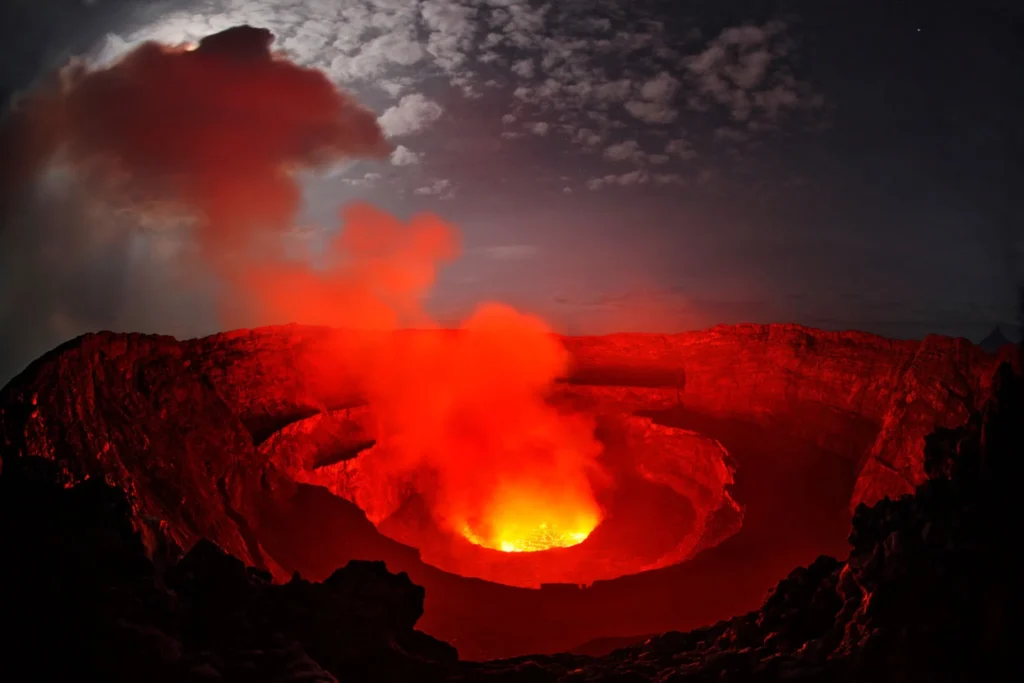
- Elevation: Approximately 3,470 meters (11,385 feet).
- Location: Situated in the Virunga Mountains, approximately 19 kilometers (12 miles) north of Goma, near the Rwanda-Congo border.
- Type: Stratovolcano, known for its highly fluid lava flows.
- Features:
- Famous for its persistent and extremely fluid lava lake, one of the largest in the world.
- The lava lake frequently fluctuates, with periodic rises and descents signaling possible eruptions.
- Notable Eruptions:
- 1977 eruption released fast-moving lava flows, killing hundreds and displacing thousands.
- 2002 catastrophic eruption resulted in lava flows reaching Goma, destroying significant parts of the city, leaving over 250,000 people homeless.
- Recent eruption occurred in May 2021, forcing tens of thousands of residents to flee.
- Hazards:
- Highly fluid and rapid lava flows endangering densely populated urban areas.
- Toxic volcanic gases, including carbon dioxide, posing respiratory threats.
- Frequent seismic activity and ground deformation linked to eruption potential.
- Monitoring:
- Closely monitored by the Goma Volcano Observatory, aided by international volcanologists and advanced satellite technology for real-time surveillance and early warnings.
Read also: Volcanic Eruption Prediction in 2025: 5 Proven Methods for Accurate Forecasting
North America’s Volcanic Landmarks
Largest Volcano in North America – Mauna Loa, Hawaii, USA
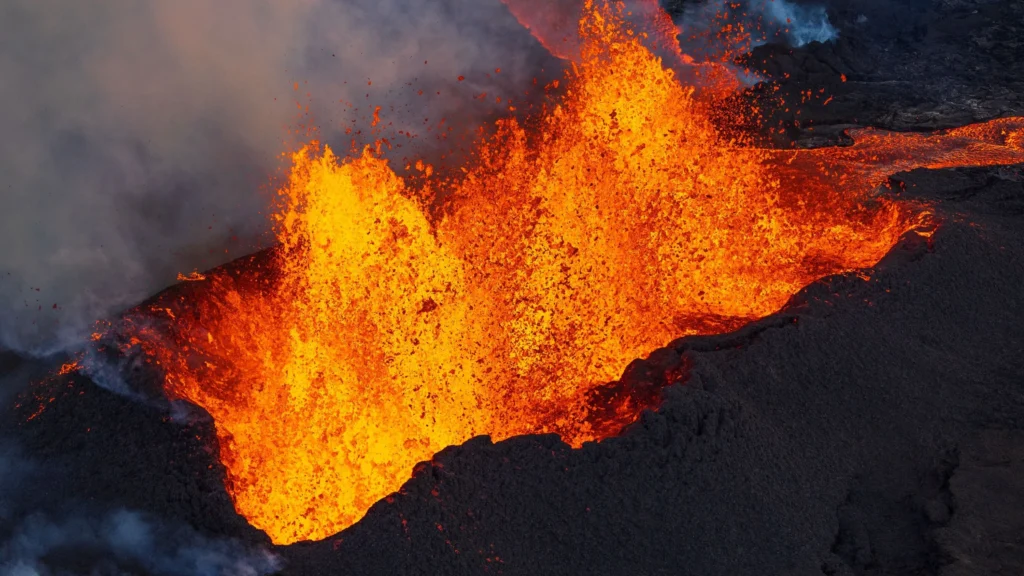
- Elevation: Approximately 4,169 meters (13,678 feet) above sea level; however, from its base on the ocean floor, it rises about 9,144 meters (30,000 feet), making it the largest active volcano on Earth by volume and area covered.
- Location: Occupies more than half of the Big Island of Hawaii, USA.
- Type: Shield volcano, characterized by its broad, gently sloping profile formed by highly fluid lava flows.
- Activity:
- Erupted 33 times since its first well-documented eruption in 1843.
- The most recent eruption occurred in November 2022, following increased seismic activity and ground swelling.
- Hazards:
- Fast-moving lava flows capable of reaching the ocean threatening communities, infrastructure, and ecosystems.
- Volcanic gas emissions contribute to air pollution, known locally as “vog” (volcanic smog).
- Monitoring:
- The Hawaiian Volcano Observatory continuously monitors, providing early warnings and eruption forecasts.
Most Dangerous Volcano in North America – Mount St. Helens, Washington, USA
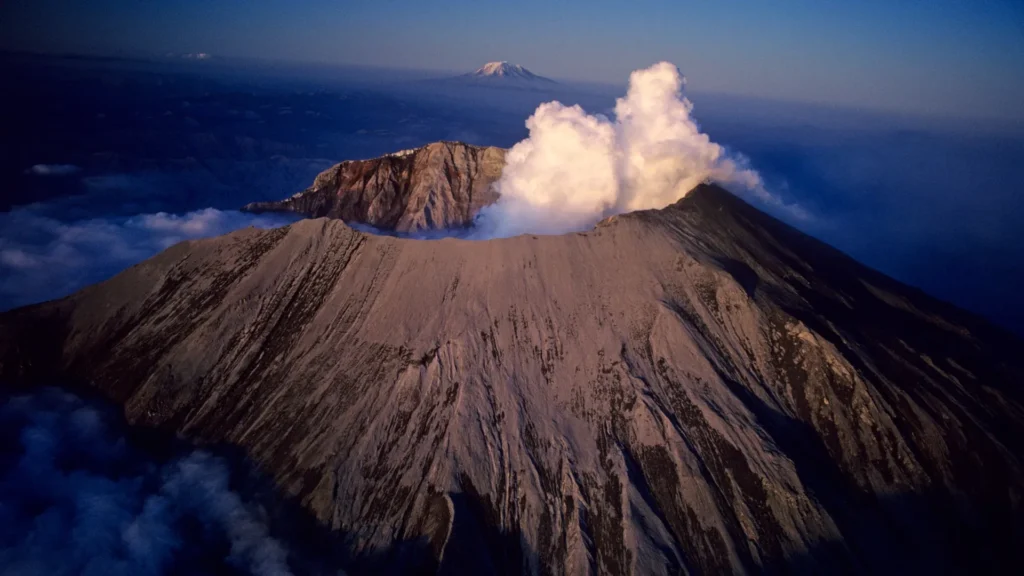
- Elevation: Approximately 2,550 meters (8,366 feet) before the 1980 eruption; currently about 2,549 meters (8,363 feet).
- Location: Skamania County, Washington, USA, within the Cascade Range.
- Type: Stratovolcano known for its explosive eruptions and pyroclastic flows.
- Notable Eruptions:
- The catastrophic eruption on May 18, 1980, resulted in 57 fatalities, massive debris avalanches, and lateral blasts that devastated surrounding areas.
- Hazards:
- Potential for explosive eruptions generating pyroclastic flows, ashfall, and lahars.
- Impact on air travel due to ash clouds.
- Monitoring:
- The USGS Cascades Volcano Observatory closely monitors seismic activity, ground deformation, and gas emissions to provide early warnings.
Read also: Top 10 Tallest Mountains of North America: Don’t Miss These Gigantic Peaks
South America’s Volcanic Giants
Largest Volcano in South America – Ojos del Salado, Chile/Argentina
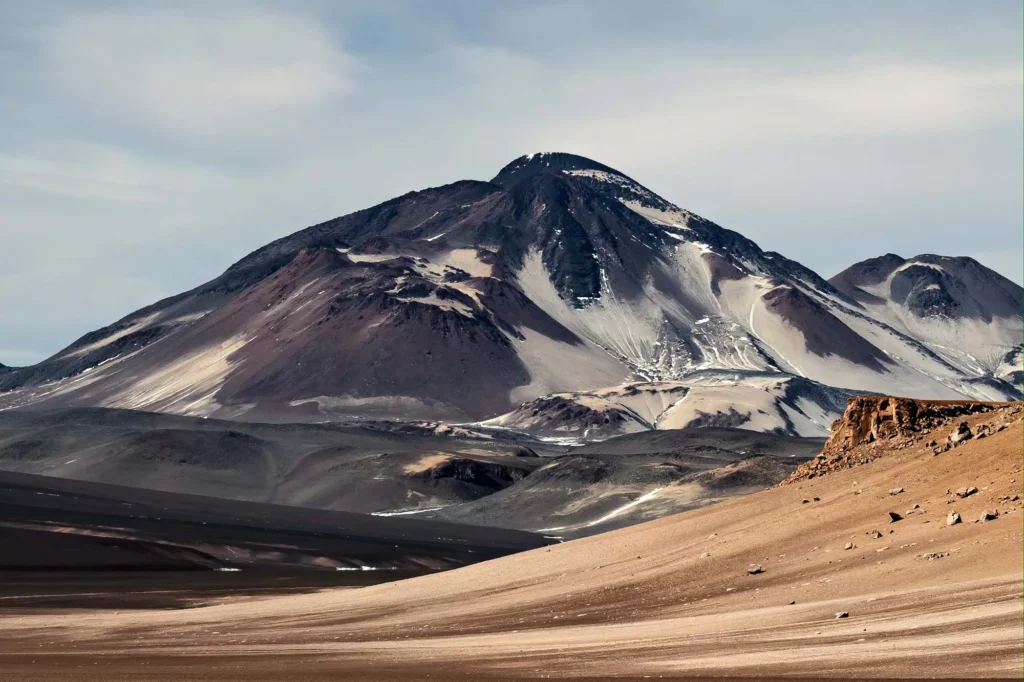
- Elevation: Approximately 6,879 meters (22,569 feet), making it the highest active volcano in the world.
- Location: Situated along the Chile-Argentina border in the Andes Mountains.
- Type: Stratovolcano.
- Features:
- Hosts the world’s highest permanent body of water, a crater lake at about 6,390 meters (20,965 feet).
- Despite its height, it has minimal snow cover due to the arid climate of the Atacama Desert.
Read also: 5 Most Extreme Climates on Earth That Make Survival Impossible
- Activity:
- No confirmed historical eruptions, but fumarolic activity indicates potential for future activity.
- Hazards:
- Due to its remote location, it poses minimal direct threat to human populations.
Read also: What’s Inside the Pyramid of Chichén Itzá? 5 Astonishing Secrets Revealed
Most Dangerous Volcano in South America – Nevado del Ruiz, Colombia
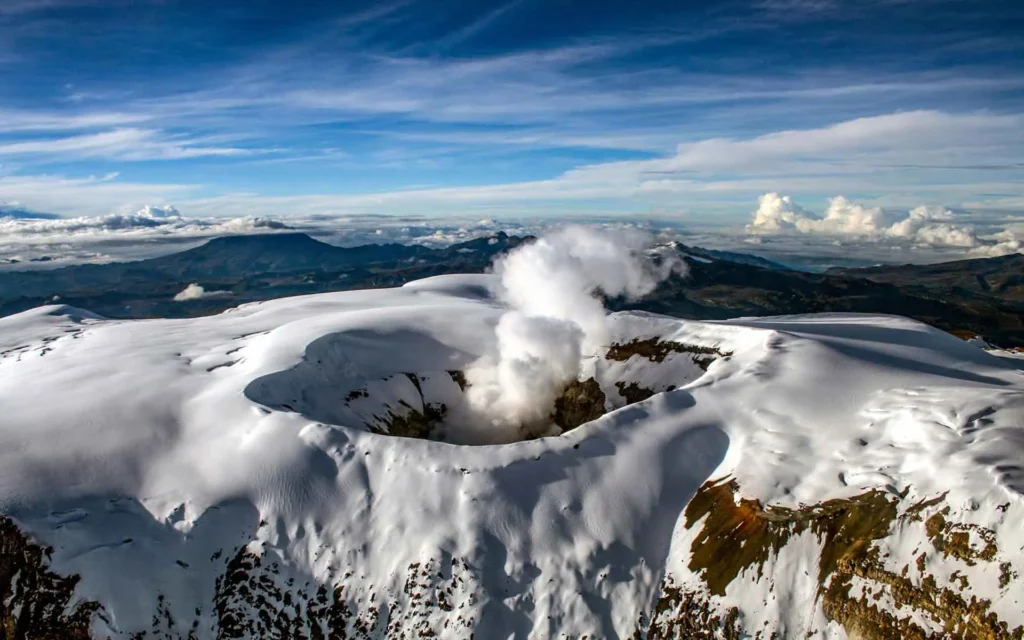
- Elevation: Approximately 5,321 meters (17,457 feet).
- Location: On the border of the departments of Caldas and Tolima, about 129 km west of Bogotá, Colombia.
- Type: Stratovolcano composed of many layers of lava alternating with hardened volcanic ash and other pyroclastic rocks.
- Notable Eruptions:
- The 1985 eruption caused lahars that buried the town of Armero, resulting in approximately 25,000 fatalities.
- Hazards:
- Potential for generating deadly lahars due to its glacial cap.
- Proximity to populated areas increases risk during eruptions.
- Monitoring:
Ongoing surveillance by the Colombian Geological Service to provide early warnings.
Read also: Unmask the 10 Most Dangerous Tribal Communities in the World
Europe’s Volcanic Titans
Largest Volcano in Europe – Mount Etna, Italy
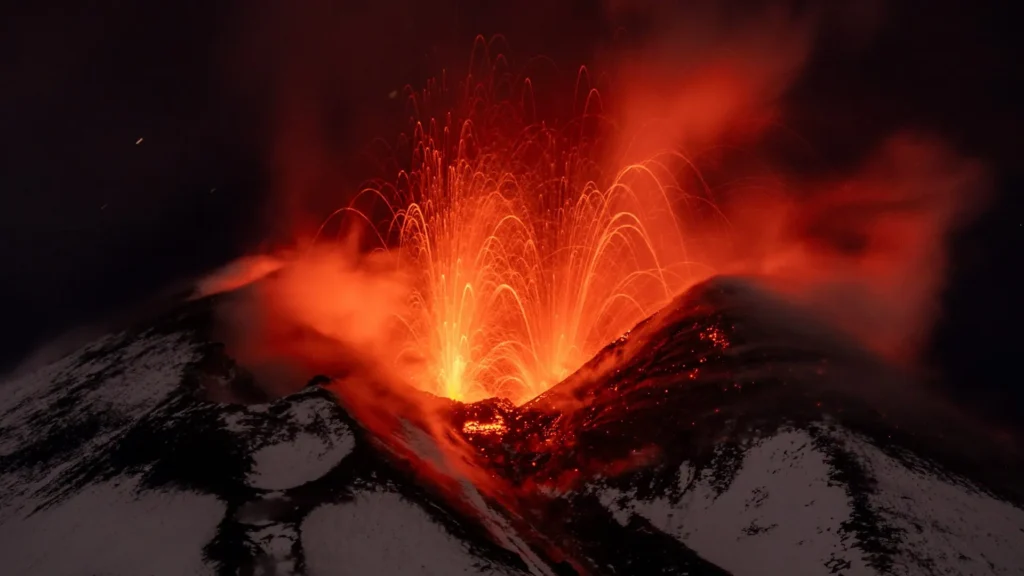
- Elevation: Approximately 3,326 meters (10,912 feet), making it the highest volcano in Europe.
- Location: Situated on the east coast of Sicily, Italy, near the cities of Messina and Catania.
- Type: Stratovolcano, characterized by its conical shape and multiple craters.
- Activity:
- One of the most active volcanoes globally, with frequent eruptions documented since ancient times.
- Recent activity includes continuous summit degassing, explosive eruptions, and lava flows.
- Hazards:
- Lava flows threatening nearby communities and infrastructure.
- Ash plumes disrupting air travel across Europe.
- Seismic activity associated with eruptions causing structural damage.
Read also: Types of Volcanoes: A Guide to the 6 Most Dangerous Forms
Most Dangerous Volcano in Europe – Mount Vesuvius, Italy
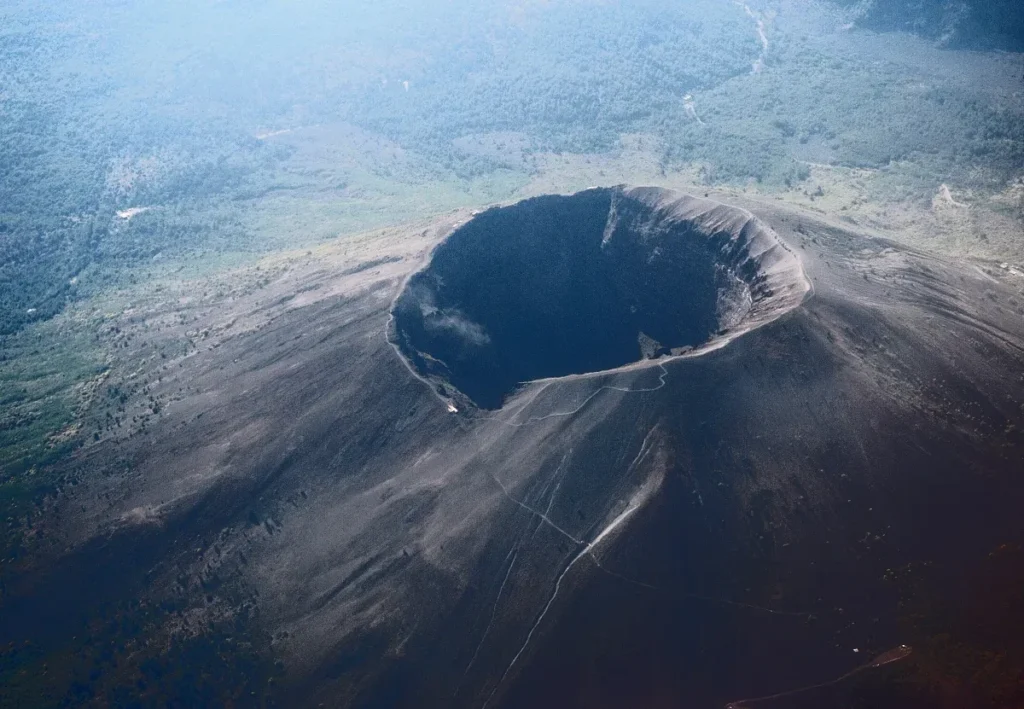
- Elevation: Approximately 1,281 meters (4,203 feet).
- Location: Overlooking the Bay of Naples in Campania, Italy, about 9 kilometers (5.6 miles) east of Naples.
- Type: Stratovolcano with a large cone partially encircled by the steep rim of a summit caldera formed by the collapse of an earlier structure.
- Notable Eruptions:
- The catastrophic eruption in 79 AD led to the destruction of Pompeii and Herculaneum.
- The most recent eruption occurred in 1944 during World War II.
- Hazards:
- Proximity to densely populated areas, with over 3 million people living in the vicinity.
- Potential for pyroclastic flows, ashfall, and lahars posing significant risks to life and property.
- Monitoring:
- Continuous surveillance by the Vesuvius Observatory, the world’s oldest volcano observatory, established in 1841.
Read also: Volcanoes – The Science And Secrets Of The Mountains Of Fire
Australia/Oceania’s Volcanic Features
Largest Volcano in Australia/Oceania – Big Ben, Heard Island, Australia
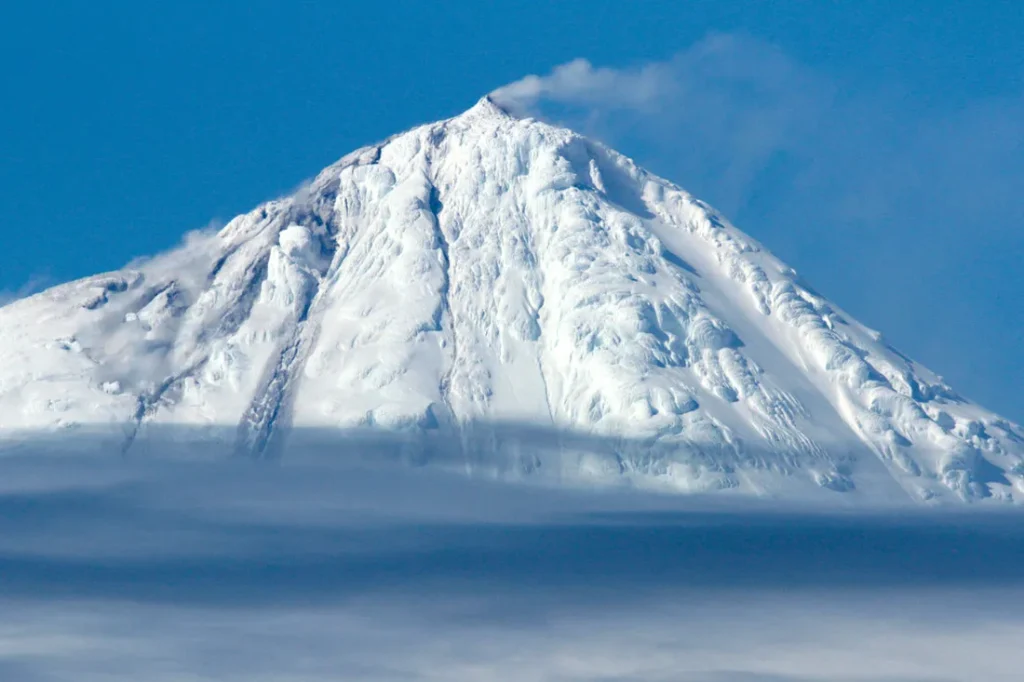
- Elevation: Approximately 2,745 meters (9,006 feet), making it the highest mountain on Australian territory.
- Location: Heard Island, a remote sub-Antarctic island located about 4,100 kilometers (2,547 miles) southwest of Perth, Australia.
- Type: Stratovolcano, characterized by its steep profile and periodic explosive eruptions.
- Activity:
- Big Ben is an active volcano with recent eruptions observed in 2016.
- The Mawson Peak has erupted multiple times since 2000, indicating ongoing volcanic activity.
- Hazards:
- Due to its remote location, Big Ben poses minimal direct threat to human populations.
- However, its eruptions can impact local wildlife and contribute to ash dispersal in the Southern Ocean.
Note: Mainland Australia currently has no active volcanoes; thus, volcanic risk is minimal.
Read also: 5 Mind-Blowing Reasons Why Asking “Is Australia an Island?”
Most Dangerous Volcano in Australia/Oceania – Mount Ruapehu, New Zealand
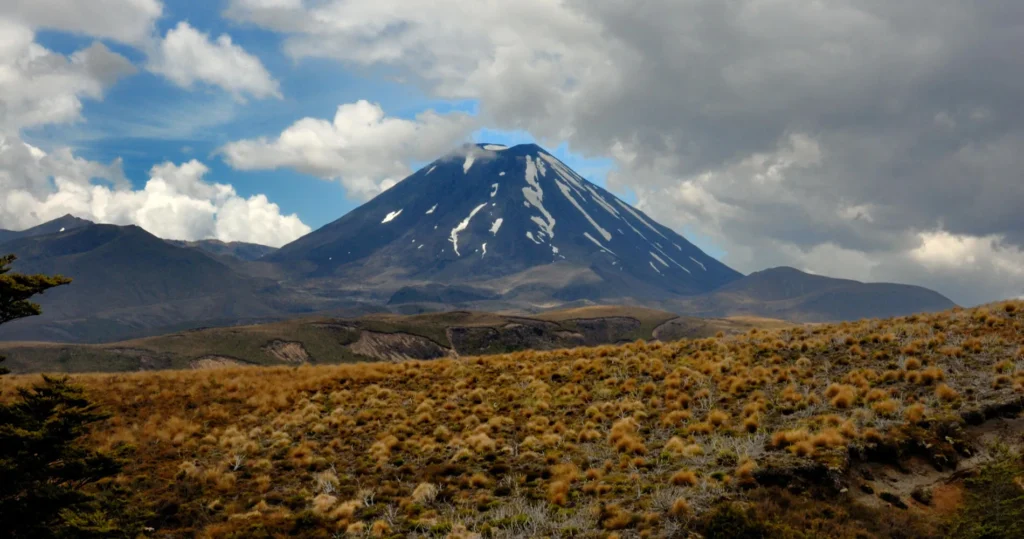
- Elevation: Approximately 2,797 meters (9,177 feet), making it the highest peak in the North Island of New Zealand.
- Location: Situated in the Tongariro National Park, central North Island, New Zealand.
- Type: Stratovolcano, known for its explosive eruptions and a crater lake that can produce lahars (volcanic mudflows).
- Activity:
- Mount Ruapehu is one of New Zealand’s most active volcanoes, with significant eruptions recorded in 1995-1996 and 2007.
- The presence of a crater lake adds to its potential for hazardous lahars.
- Hazards:
- Eruptions can lead to ashfall affecting surrounding communities and aviation.
- Lahars pose significant risks to nearby infrastructure, including ski fields and transportation networks.
- Monitoring:
- The volcano is closely monitored by GeoNet, New Zealand’s geological hazard monitoring system, providing early warnings to mitigate risks.
Read also: 10 Amazing Facts about the Earth’s Oceans
Antarctica’s Volcanic Landscape
Largest and Most Dangerous Volcano in Antarctica – Mount Erebus
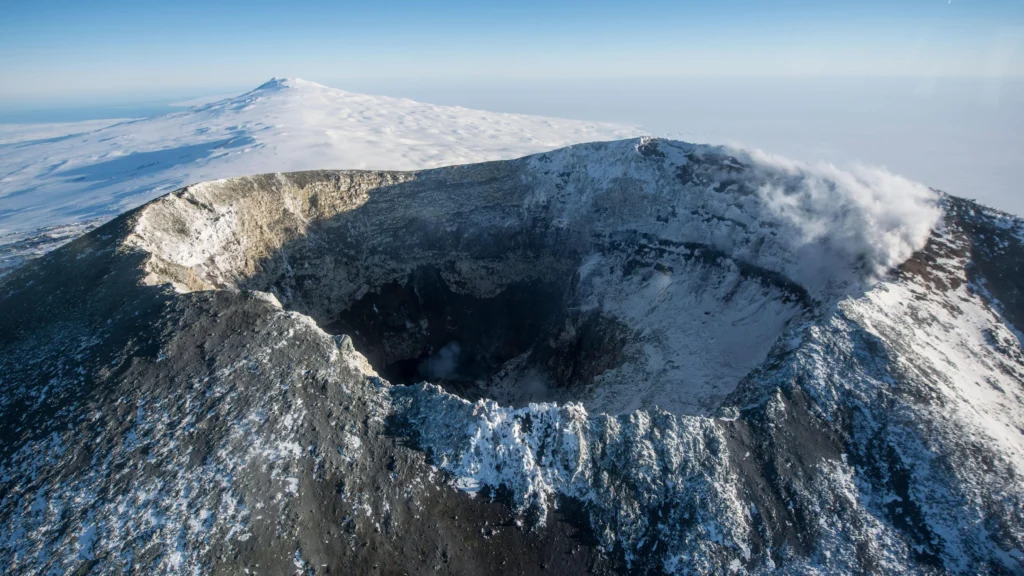
- Elevation: Approximately 3,794 meters (12,448 feet), making it the second-highest volcano in Antarctica.
- Location: Ross Island, overlooking the McMurdo Research Station.
- Type: Stratovolcano, notable for its persistent lava lake and continuous low-level eruptive activity.
- Activity:
- Mount Erebus is the world’s southernmost active volcano, with continuous activity observed since its discovery in 1841.
- It hosts one of the few long-lasting lava lakes on Earth, contributing to its persistent activity.
Read also: Antarctica from Space: A Visual Story of a Continent in Crisis
- Hazards:
- While its remote location minimizes direct threats to human populations, eruptions can pose risks to nearby research stations.
- The emission of volcanic gases and occasional lava bombs necessitates continuous monitoring.
- Unique Features:
- Mount Erebus emits tiny particles of gold, a phenomenon not commonly observed in other volcanoes.
Note: Antarctica hosts numerous subglacial volcanoes, with recent studies identifying nearly 100 volcanoes beneath the ice sheet. The potential activation of these volcanoes due to climate-induced ice melting could have significant implications for global sea levels and climate patterns.
Read also: 7 Incredible Facts About the World’s Highest Mountains by Continents You Should Know
Conclusion
Understanding the largest and most dangerous volcanoes across continents is crucial for assessing geological risks and preparing for potential natural disasters. Continuous research and monitoring efforts are essential to mitigate the impacts of volcanic activity on human societies and the environment. As we advance our scientific knowledge, we enhance our ability to coexist safely with these powerful natural phenomena.
FAQs
1. What defines a stratovolcano?
A stratovolcano is a volcano characterized by a steep profile and periodic explosive eruptions, typically composed of alternating layers of lava and ash.
2. Why is Mount Erebus significant among Antarctic volcanoes?
Mount Erebus is notable for being the southernmost active volcano on Earth and for hosting a persistent lava lake.
3. How does volcanic activity impact global climate?
Volcanic eruptions can release large amounts of ash and gases into the atmosphere, potentially cooling the climate temporarily.
4. What are lahars, and why are they dangerous?
Lahars are volcanic mudflows that can rapidly flow down volcanic slopes, destroying structures and endangering lives.
5. How are subglacial volcanoes monitored?
Subglacial volcanoes are monitored using seismic sensors and satellite imagery to detect signs of activity beneath ice sheets.


